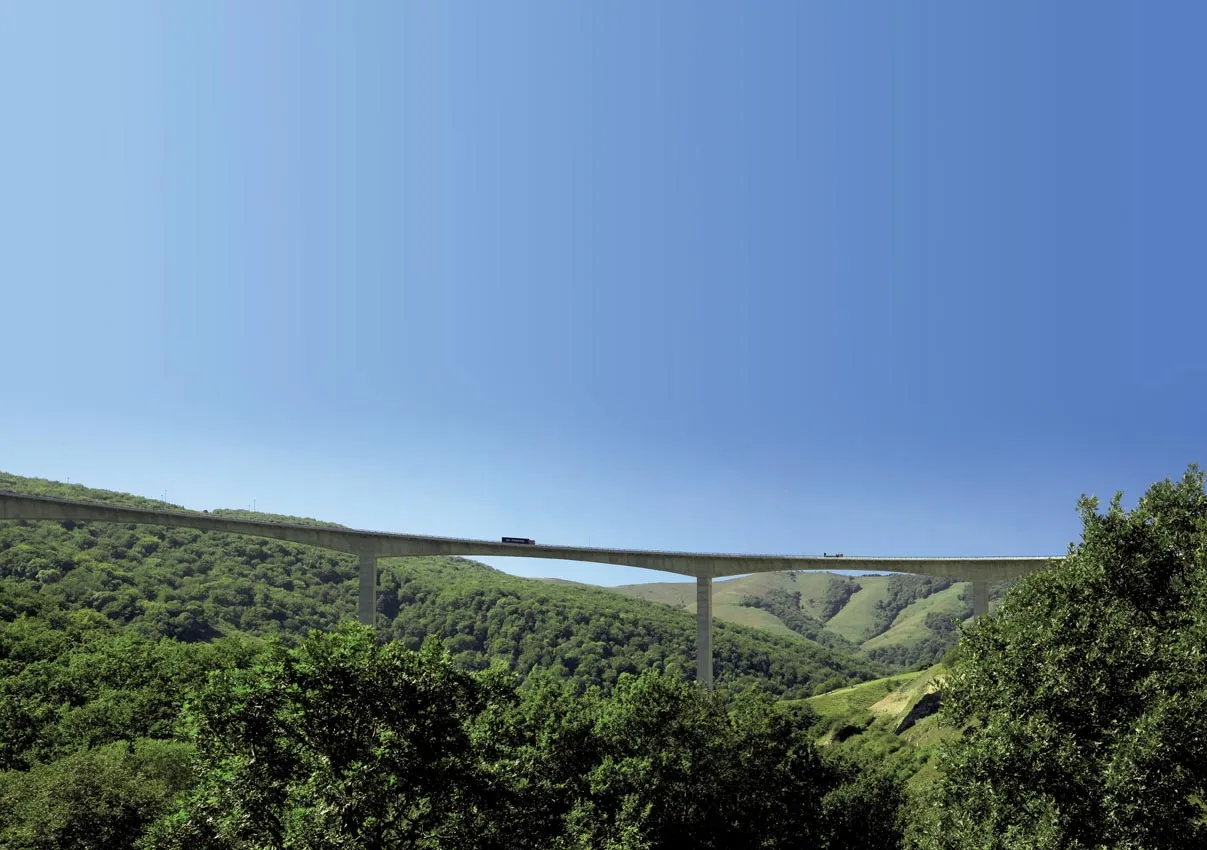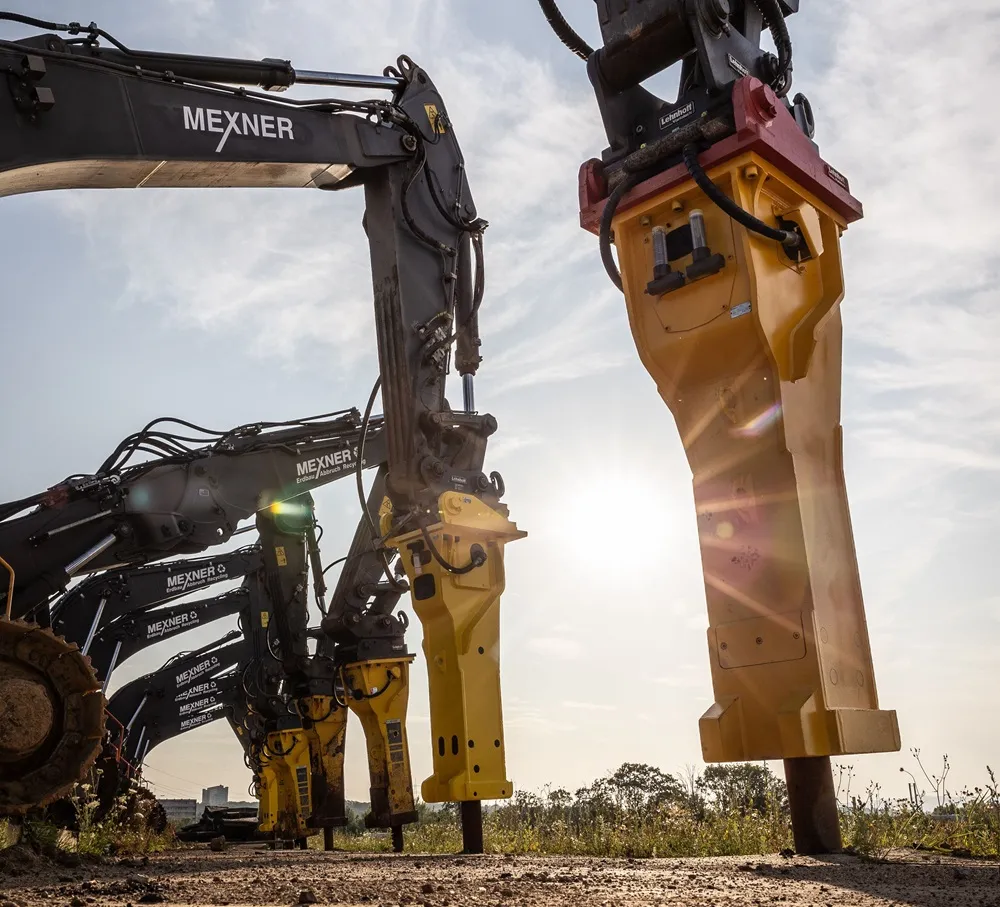Amid a mountain wilderness, a new highway system rises, featuring Spain's highest viaduct For years, motorists and truck drivers in northern Spain have had to endure using a dangerous road liable to traffic hold-ups, delays and accidents, and frequently impassable in the depths of winter. In any event it is a slow and tortuous climb from Molledo on the Cantabrian lowlands up the N-611 road through the Cantabrian Mountains to Palencia, on the Meseta, Spain's high central plateau.
July 9, 2012
Read time: 4 mins

Amid a mountain wilderness, a new highway system rises, featuring Spain's highest viaduct
For years, motorists and truck drivers in northern Spain have had to endure using a dangerous road liable to traffic hold-ups, delays and accidents, and frequently impassable in the depths of winter.In any event it is a slow and tortuous climb from Molledo on the Cantabrian lowlands up the N-611 road through the Cantabrian Mountains to Palencia, on the Meseta, Spain's high central plateau.
Now the N-611 is all but deserted, used mostly by local traffic, and in its place is the new Molledo-Pesquero section of the Autovia de la Meseta, a welcome addition to Spain's highway system.
When completed, the A-67 (the Autovia de la Meseta) will provide a high-speed link between Spain's capital Madrid in the centre of the country, and
The highway is being designed and constructed by
The triumph of engineering and construction in a rugged and beautiful mountainous terrain, built to cope with high traffic volumes, extreme wind and temperatures, and sensitive environmental concerns, such as noise, visual impact and disturbance to the natural surroundings, posed two particular challenges for Ferrovial Agroman: the design and construction of the Montabliz and Pujayo viaducts.
The Montabliz viaduct was the greater challenge. At 805m long and 150m high, it spans an area of outstanding natural beauty in rough terrain. The Bisueña river runs underneath the viaduct, through a deep valley cloaked in ancient oak forest, and home to rare animals. In order to minimise disturbance to the valley floor and natural surroundings (and to minimise visual impact), the viaduct was constructed on four single tapering piers, supporting five deck spans. The central pier, at 140m high, is Spain's tallest, and the viaduct is the sixth highest in Europe.
Ferrovial Agroman used self-climbing formwork to construct the piers (a first in construction techniques in Spain), and the roadway is a continuous pre-stressed concrete deck, with the piers embedded in the concrete deck. The deck segments are the largest and heaviest built in Spain (constructed at the site) and among the largest in the world.
The viaduct at Pujayo, 420m long, also posed similar environmental challenges, and the same method of design and construction as that used at Montabliz also allowed for a reduction of road noise and the lowest possible visual impact on an adjacent village.
"Metal-style plate joints tend to be really noisy, and give an uncomfortable ride," says Juan Carlos Minaya, marketing and sales manager for engineered products in Izarra, Spain, part of Trelleborg Engineered Systems.
With a predicted average daily flow of some 11,500 vehicles, 16% of which comprises heavy freight trucks, any further noise reduction over that achieved by the basic structure design would be environmentally significant. At the initial stages of the project in 2005, Ferrovial Agroman approached Trelleborg, asking it to supply data on its Transflex high-movement seismic joints for bridges.
Trelleborg provided a 'mobile' section joining the abutments and the bridge decking. The surface design of the Transflex expansion joints plays a vital part in road noise reduction. These joints are the final piece in a series of measures designed to ensure bridge safety and to minimise environmental impact.
"The end result is an impressive section of high-grade mountain highway. Driving over the two viaducts, the driver is barely aware of passing over our expansion joints, while at the base of the piers, there is hardly any sound from traffic passing some 150m above," says Antonio Nogueira, who is head of production of the expansion joints division at Trelleborg in Izarra, Spain. "Mostly, you hear the wind rustling through the forest, and the occasional cry of the Iberian eagle."
Transflex expansion joints from Trelleborg span the space between the decking and the abutments on viaducts, which form part of the A-67 highway. They absorb movement caused by high traffic volumes, high winds and contraction, and expansion from temperature variations.
Juan Carlos Minaya explains: "Each expansion joint has two sections. The first is the bridging module, a strong rubber plate that spans the structural opening between the abutment and the bridge deck. The second is the movement module, which absorbs movements of the bridge deck. Horizontal safety anchor bars strengthen the entire unit and prevent sagging."
A form of surface patterning that creates very little noise as traffic passes over it has been developed. Transflex 3200 expansion joints are used on the Montablitz viaduct, 12 for each section, weighing 500kg each. On the shorter Pujayo viaduct, Transflex 1600 joints were used.









